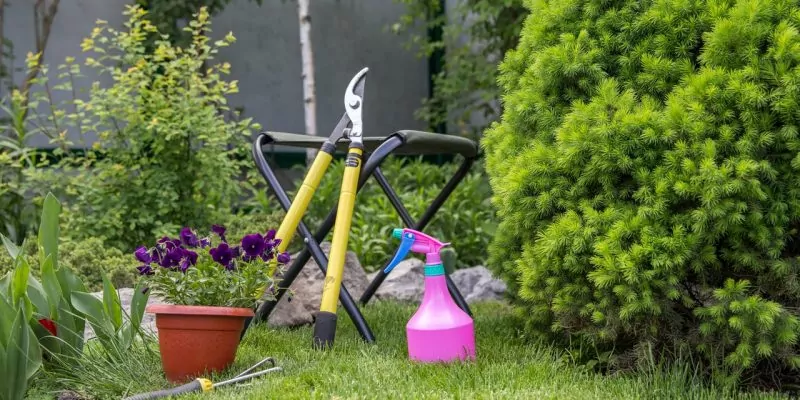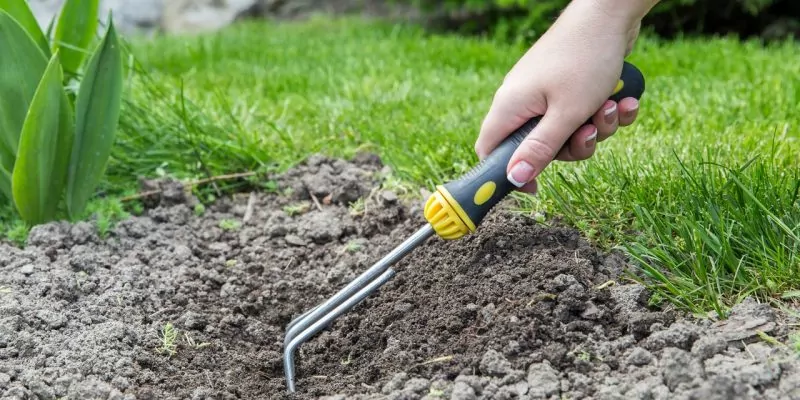The number of homes in the U.S. with lawns is growing tremendously, standing at almost 80%. Today, Americans spend up to $47.8 billion on lawn and gardening purchases. On average, a single household spends up to $503 a year on their lawn. These costs extend from lawn tools to outdoor furniture.
From these statistics, it’s evident that lawns are a significant investment for many homeowners. Moreover, a lawn makes your outdoor space more functional. This is where you want to relax after a long stressful day at work or invite your friends over for a weekend barbecue. It’s also a great picnic spot with your family when you’re not at work. To learn more about lawns and gardening, visit Home & Garden Help.
However, you’ll only enjoy these activities if your lawn is lush and in good shape. So, how do you achieve that? Check out this guide to understand what it takes to keep that grass greener.
Know the Type of Soil You’re Dealing With
Start by taking the guesswork out of your lawn project. It will help if you test the soil to know what you’re dealing with in the first place. Actually, experts recommend testing your garden soil annually to determine the treatment it needs.
You don’t need scientific skills to test your soil. Just follow these simple steps:
- Buy a soil test kit from your local hardware store.
- Go for a kit that tests all major soil compounds, such as potassium, nitrogen, phosphorus, as well as pH,
- Use a trowel to dig a handful of your garden soil.
- Add soil to the testing kit, following the manufacturer’s instructions.
- Add water and reactive agent before shaking the mixture.
- Wait for about two minutes and observe the color change.
- Compare the color change to the color-coded chart.
Your results will either show acidic or alkaline soil. You can add lime to mitigate acidic properties or sulfur if the soil is too alkaline. Alternatively, you can hire someone to do the test for you. Knowing your soil properties is the first step on how to make grass green, even before prepping the ground.

Fertilizers Are a Good Start
Lawn fertilizers are great in many ways. They can help protect the soil, improve overall growth, and even fight off weeds and pests. Moreover, some fertilizers provide better disease resistance for the long term. But what’s the best fertilizer to use on your lawn? Well, choosing a fertilizer is not a one-size-fits-all task.
What works on your neighbor’s lawn may not work on yours. Also, some fertilizers work better with seasons. You can leverage online guides on how to choose the right fertilizer. Alternatively, let the soil test results you achieved above guide you. Then, take the results to a gardening shop, and the experts will tell you what to buy.
However, it’s worth noting that organic fertilizers will give you the best results. Also, the more fertilizer you add to your lawn, the more you’ll need to mow it. This is because extra nutrients promote rapid grass growth.
Be Mindful of the Calcium Intake
Calcium is a macronutrient that soil needs for proper growth, although in much smaller quantities than potassium, phosphorus and nitrogen. Signs of calcium deficiency include stunted growth and yellowing of leaves. A simple soil test should tell you if your soil needs more calcium. Adding high-calcium lime can help get your lawn the calcium it needs. Besides preventing weed infestation, adding calcium to your soil will enhance nitrogen absorption and protein synthesis.
Get Rid of Crabgrass
Crabgrass is very unattractive when it grows in your lawn. It manifests in clumpy weeds and thrives faster than typical grass. As a result, it can take over the lawn even before you know it unless you weed it out at early stages. Moreover, crabgrass fights for nutrients and water with your planted grass.
You don’t need to worry about crabgrass if you live in a shaded region. This is because it thrives mostly in hot temperatures of up to 56° F. You can eliminate crabgrass from your lawn by applying a pre-emergent herbicide. Some homeowners go for all-natural corn gluten as an alternative.
Take Advantage of Organic Matter
Organic matter is beneficial to your lawn if the grass is in its early season. You have two options. You can either build a compost heap from your garden waste or purchase ready-made organic matter from a home center. However, if you opt for the former option, ensure that the compost is fully finished. It should be dark in color and give off a strong earthy but slightly pleasant smell.
Adding organic matter to your lawn will improve the soil structure and water holding capacity to promote lush and even grass growth. How? Organic matter soaks up moisture before releasing it to the grassroots in bits.
Remove Weeds
Weeds are just like crabgrass. They compete with your lawn grass for water and nutrients. Perennial weeds can be even harder to get rid of because they grow from both seed and propagating roots. You can fight weeds using herbicides or fertilizers. Or, you can simply pull them out with your hands, especially if they are still young and the soil is moist. But be cautious because some weeds can prick you. Others are poisonous, and it will help if you wash your hands thoroughly after pulling them out.

How Long Should the Grass Grow?
The choice of grass length is purely aesthetic or dependent on your Homeowners Association guidelines. Nevertheless, it’s wise to let the grass grow to a considerable length of up to 3.5 inches before mowing it. That way, the grass blades can offer more shade to the roots and reduce water evaporation. Also, they can suffocate weed seeds.
Your Mower Should be in Shipshape
Always sharpen your mower’s blades before using them in overgrown lawn grass. Remember, the goal is to trim the grass blades clean instead of tearing them off. This prevents any rugged tips on the lawn that can be an avenue for weed seeds and diseases.
Keep Your Lawn Lush and Healthy
A lush, inviting lawn is the dream of every homeowner. Use these tips to make your lawn grass the neighborhood’s envy. You can also talk to experts from time to time if your lawn is experiencing weeds, disease, or pest infestation.
Develop your gardening skills. Sign up for lifestyle courses at Skill Success!


